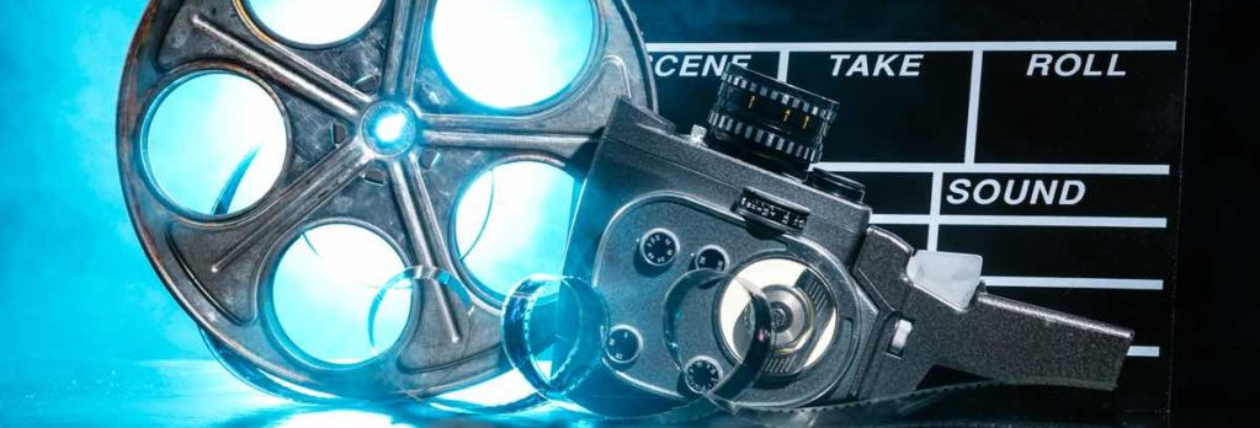Monthly Archives: October 2024
Filters
Mulholland drive technical elements
Cinematography:
Mise en scene:
Sound: Within the film, sound is used to give an earie and unsettling feeling to the audience. An example of this being the ending credits where there is no sound except a low tone hum. This occurs right after the ending in which Diane is attacked being the most surreal part of the film therefore the sound adds towards the suspense giving a sense of mystery.

Editing: editing in Mulholland drive is used to build and relieve tension within scenes. An example being when the two detective check the back of the diner before being jumped at by a monster. In this scene its edited in a way in which scene rarely cut to another shot leaving a sense of tension as the audience is left unsure when something is going to happen.
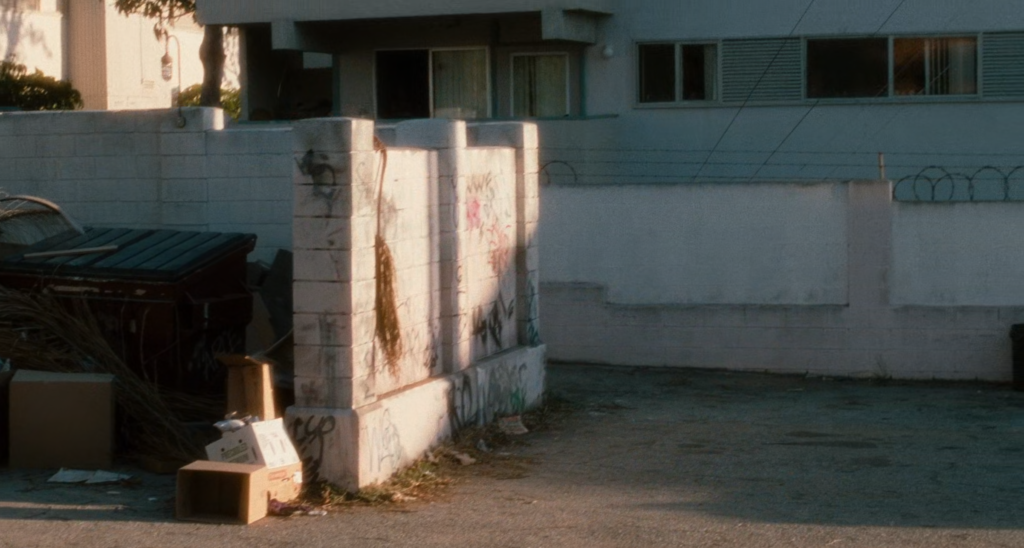
Lynch auteur elements
Uncanniness: Lynch creates the feeling of uncanniness though disturbing images and ominous low hums. This creates a sense of tension and mystery for the viewer as they have no idea about what to expect from the rest of the film. Lynch uses this feeling of unpredictability if a lot of his films.
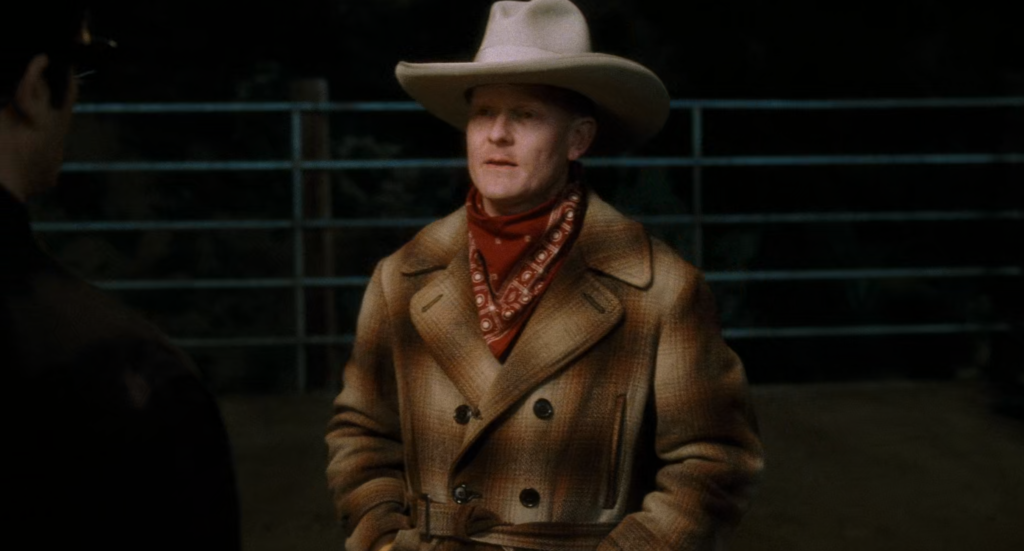
Doppelgangers: From the German myth: Two people will meet there identical self at some point in there life. This happens with Diane and betty.

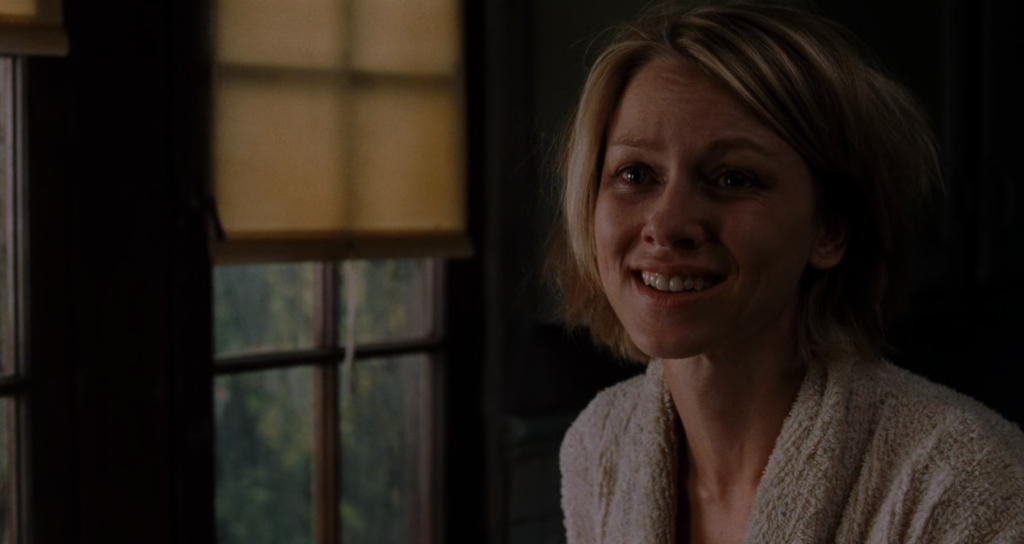
Uses of ominous sounds: Lynch uses low rumbas and hums to create a sense of tension and suspense. An example of this would be in the scene where betty and Diane go to look at the house as the viewers have no idea what to expect.

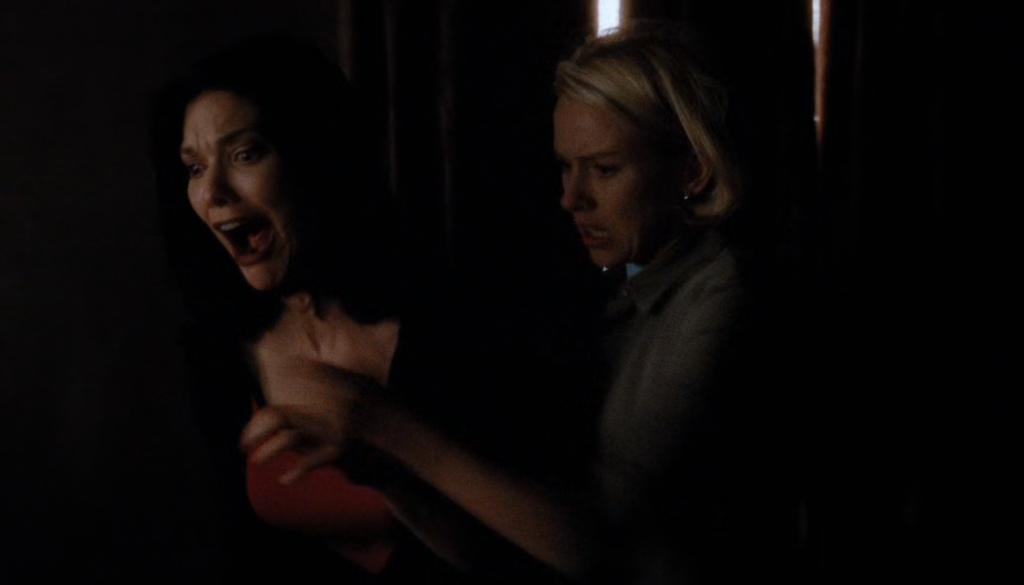
Heightened performance: heigtened perfomee would be an example of over the top acting such as when the garbage monster comes out from behind the corner.
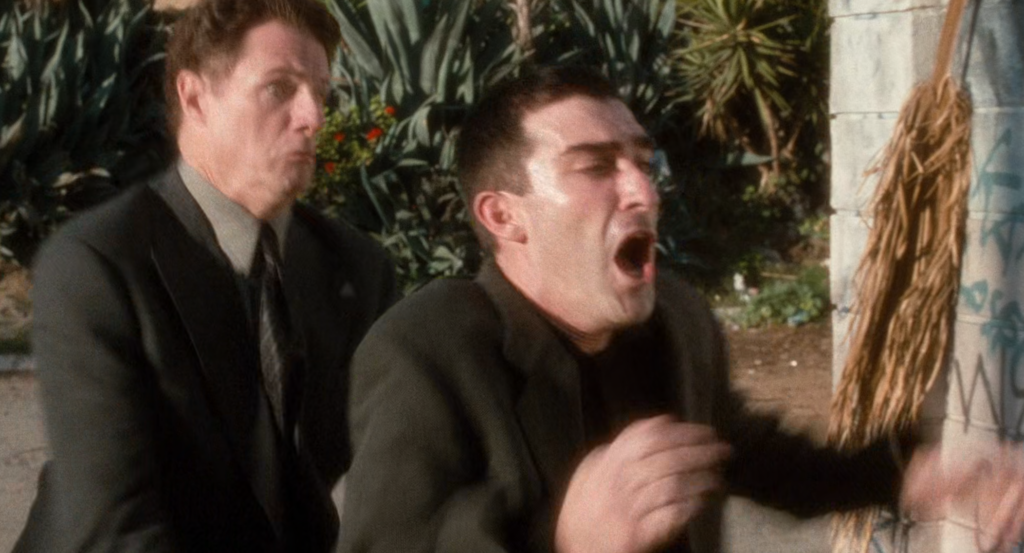
Mulholland Drive – Task 4
Technical Elements
Cinematography – The lighting and composition in this scene adds to the surrealist and mysterious tone of the sequence. The character of the ‘cowboy’ is one that isn’t explained, so the shadow casted over his eyes eludes to his confusing and eerie character. Additionally the medium close up allows the spectator to be threatened by his presence, as he feels invasive and up-close, adding to the tension of the scene.
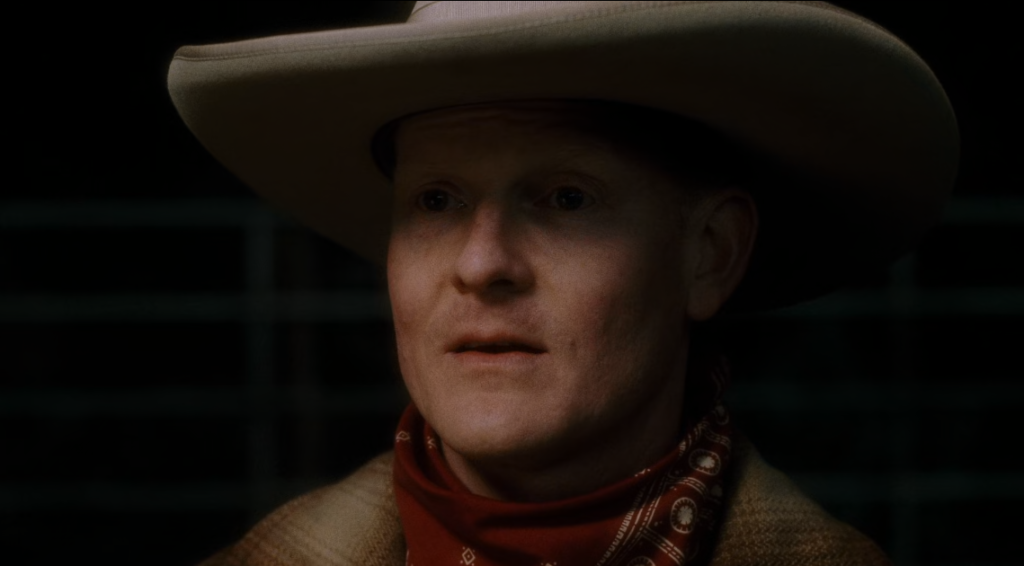
Mise-en-scene – Lynch portrays the mysterious and surrealist figure of power in the film industry through the dark and surrealists nature of his surroundings. Lynch uses curtains to symbolise mystery, as its unsure what could be behind them. The office is bare and dismal, almost sci-fi, indicating that this is a heightened interpretation of those industry CEO’s that are unseen but are all-powerful and threatening.
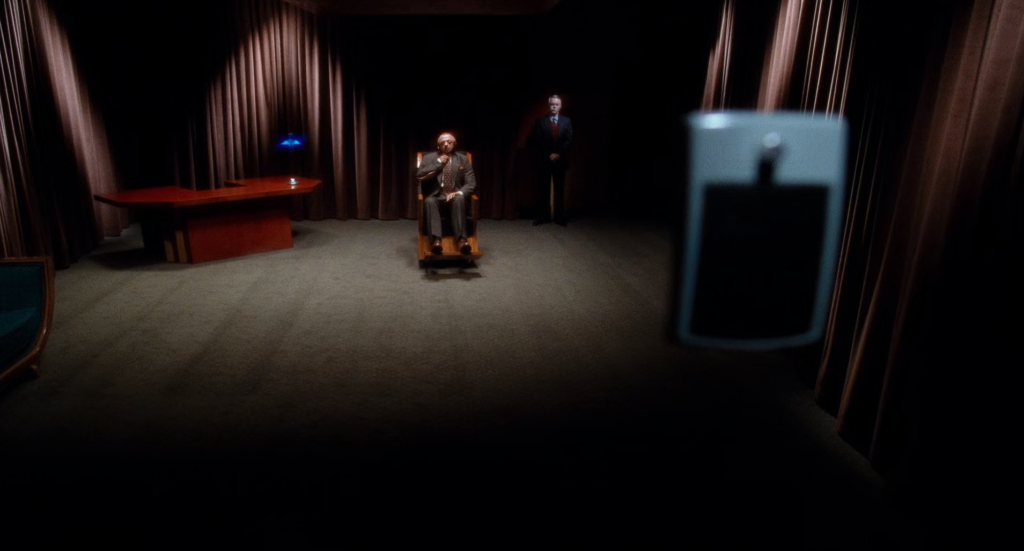
Sound – Lynch uses a contrapuntive score in this scene to highlight the absurdity of how this situation is handled. The score is upbeat and positive, whilst the situation is awkward and hard-hitting. The music leads the spectator to not expect this turn of events, and as a result ends up just as shocked as the director/husband.


Editing – The way in which these close ups are right before and after the shots fired is effective in emphasizing the heightened performance in the scene. The spectator is led to be shocked at the gun and even more shocked t its effect on the victims hair, the close ups being sandwiched with a long shot just emphasises the gruesome nature of the scene more.
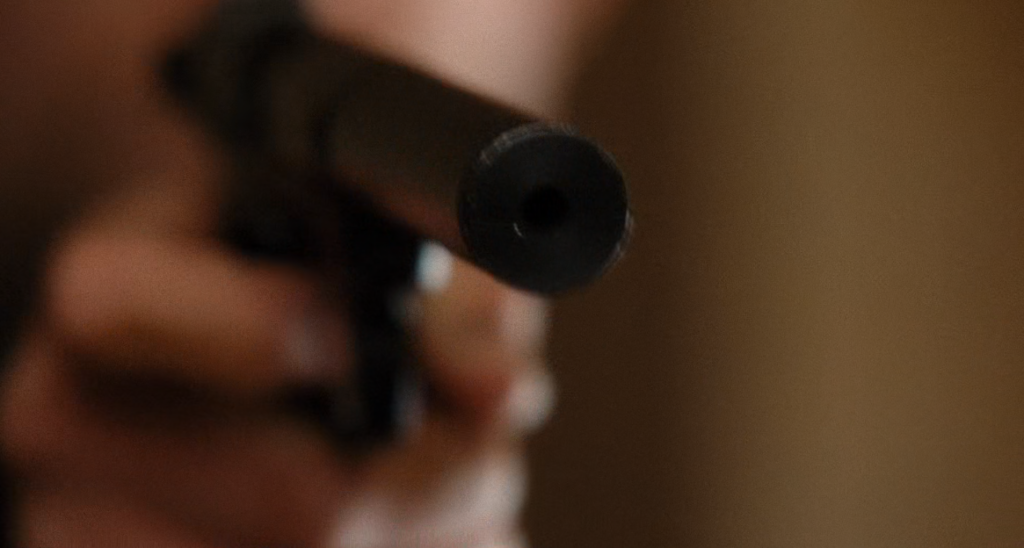


Mulholland Drive – Technical Elements
Cinematography
- The pools of darkness, long tracking shots, and points of view leading to entrances and around corners, all build an ominous aesthetic, added by the soundtrack with often disturbing echoes or humming (recalling Eraserhead), an obsession with 1950’s popular music, and the unnerving synth score of regular composer Angelo Badalamenti
- The lightning and composition of many shots are reminiscent of the paintings of Edward Hopper. Despite having a contemporary setting, this gives the film a feeling that it is set in the 1950’s
- Cinematographer, Peter Deming, often lights characters using ‘night’ lightning even when the background is broad daylight. This adds to the dreamlike atmosphere of the film
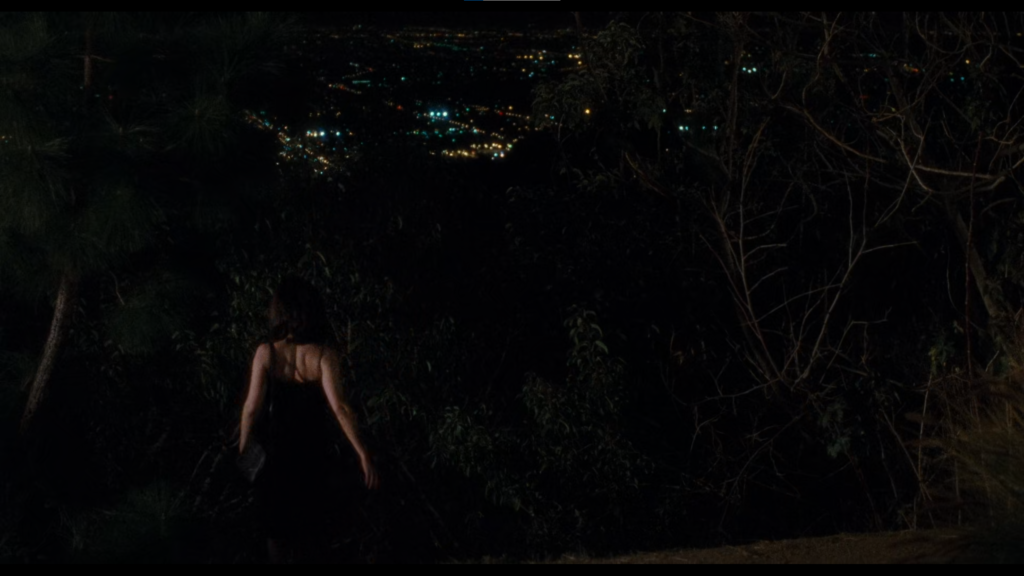
Mise en Scene
- Noir (the gangsters, the city as corrupting for the new arrival, the Pandora’s box key and safe, the femme fatale, the killings)
- Musicals (the curtain, performance microphone, the singers, previously seen in Blue Velvet (1986)
- Hollywood itself (famous road signs, landmarks, and intertextual auteur references to his own films, as well as Vertigo (Hitchcock 1959) and Sunset Boulevard (Wilder, 1950)
- Adding to the 1950’s feel to the movie, many of the characters dress and wear hair and make-up more associated with that decade. This was also a period of ‘Classic Hollywood’ and is a nod to one of the film’s main inspirations Sunset Boulevard (Wilder, 1950)
- Lynch often uses repeated motifs, meaning of which can shift and change throughout the narrative
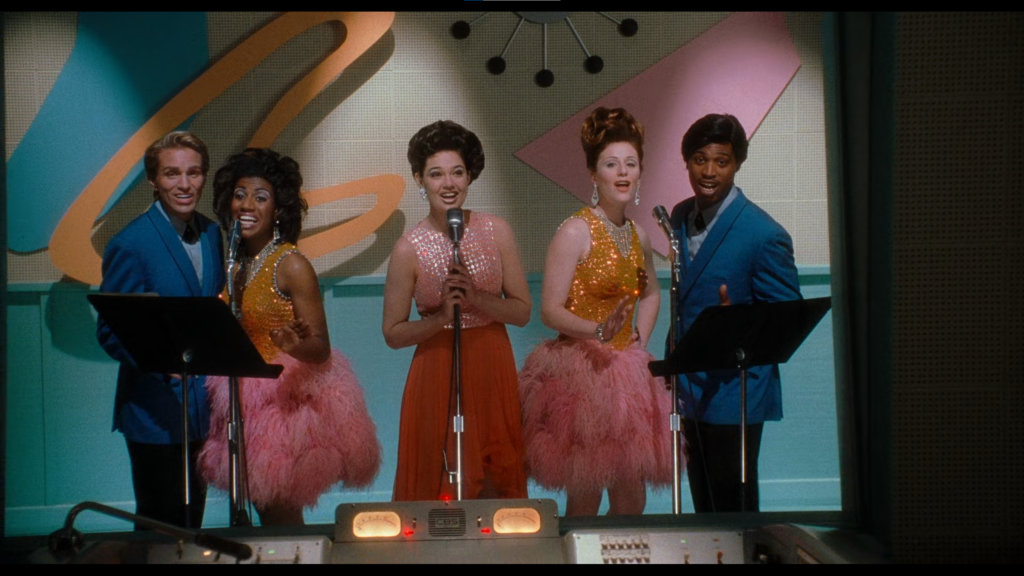
Sound
- Lynch consistently uses a deep throbbing bass sound to create a sense of unease and fear. Often this sound effect is used while the camera focuses on an unassuming object, imbuing the everyday with a malign energy
- In Mulholland Drive, this bass throb is combined with a sound like muffled wind that reminds us Los Angeles is a city in vast desert
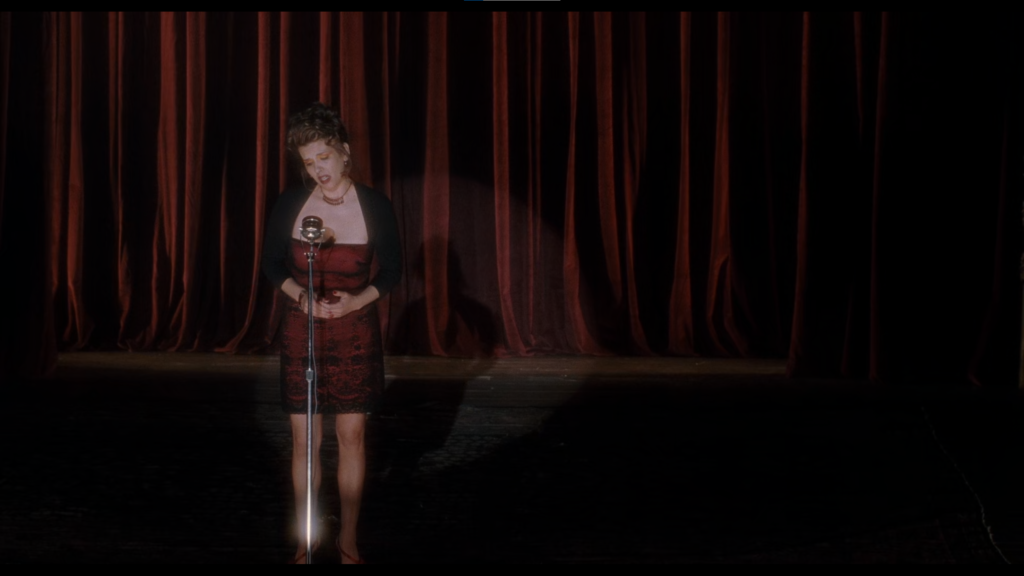
Editing
- In many of Lynch’s films, he creates a nightmarish atmosphere by filming and editing sequences. We feel there is something just out of shot that is lurking and there are repeated closeups of the characters’ confused or terrified faces, the sequence in the diner is a perfect example of this
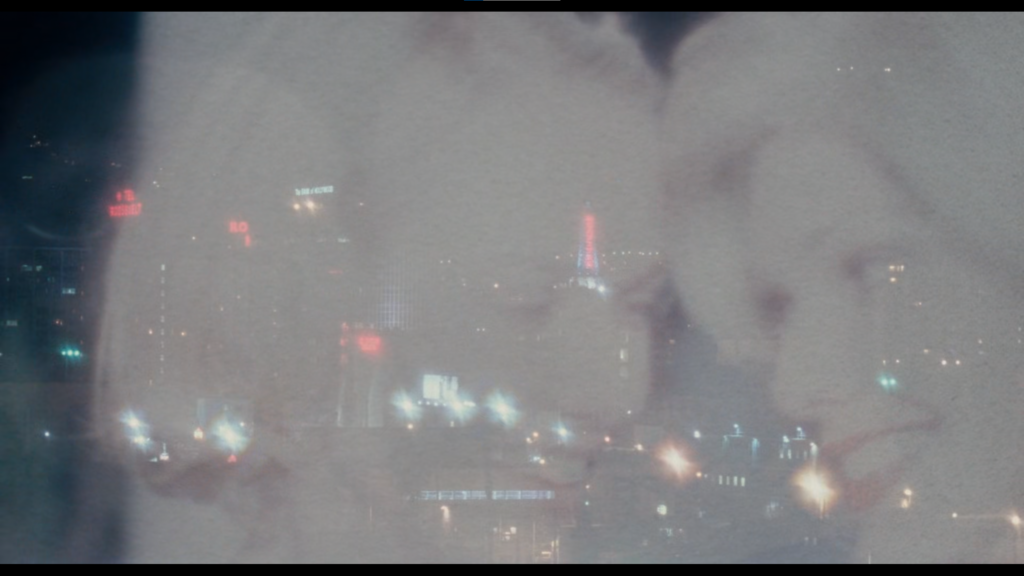
Mullholland Drive/ Task 4 – Technical Elements – George Blake
Cinematography –


Lighting and composition with shots of Mullholland Drive take influence from the artist, Edward Hopper, with low dark tones contrasted with bright light sources this is often used within his paintings. Within Mullholland Drive, this is also a common technique picked up by Lynch, with camera angles too, its obvious to see how he takes his influence as being positioned in corners, like in Hoppers painting the spectator gets a full coverage of the scene.
Mise En Scene –
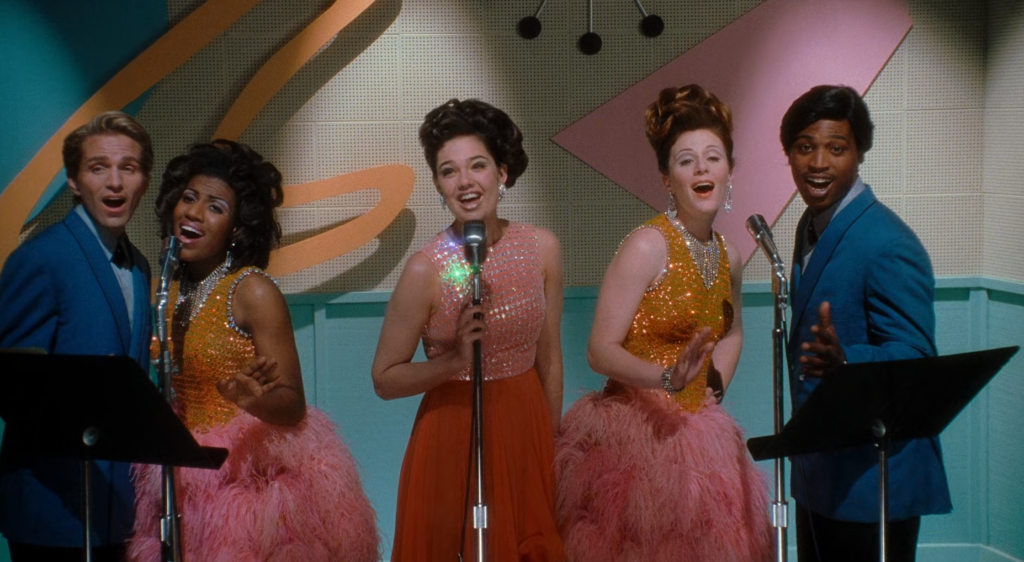
Although set within the present (at the time of filming), Lynch often uses a 1950’s aesthetic in terms of the way characters dress and look with hair and make-up. This pays homage to the ‘Classic Hollywood’ aesthetic of the 1950’s.

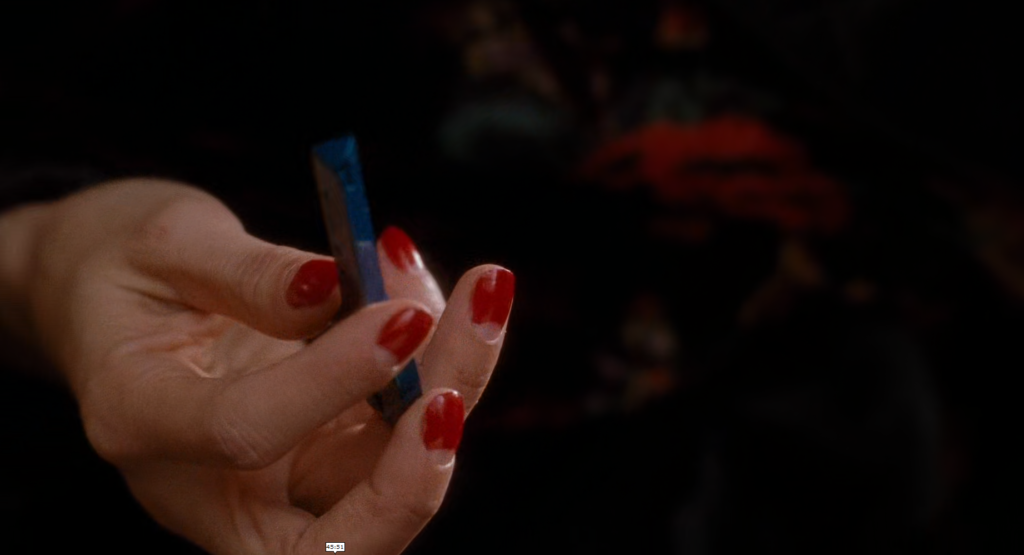
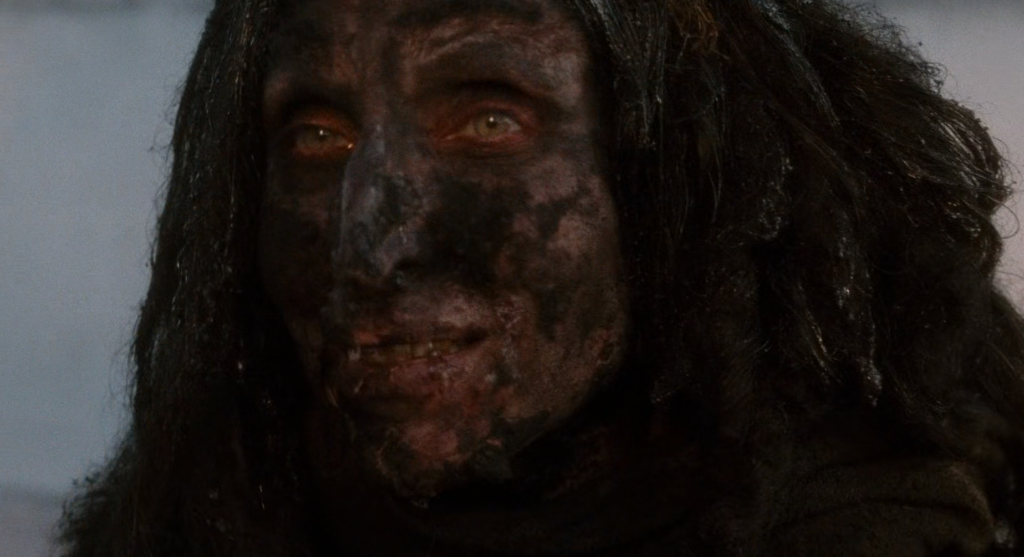
Lynch also uses repeated motifs within his film, the meanings of these motif’s can change differently throughout the films narrative, leaving it to the spectator to decipher what they mean. Examples of such include the cowboy, the key and the bum.
Sound –

Through the use of Sound, an ominous music score of synths is used to create tension and a build up of anxiety, used throughout the film during dramatic or cryptic events its use as a motif always for-warns something occurring.
Editing –
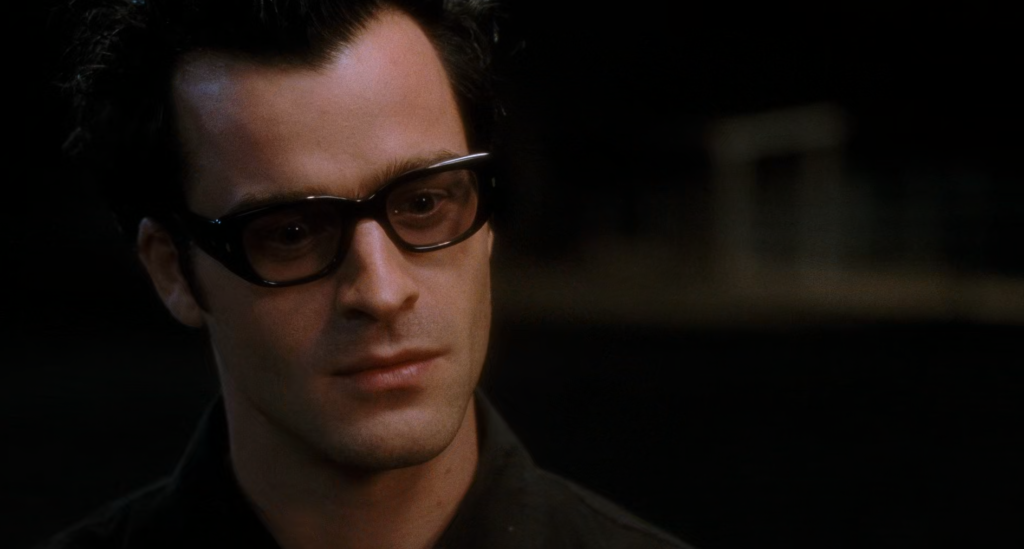
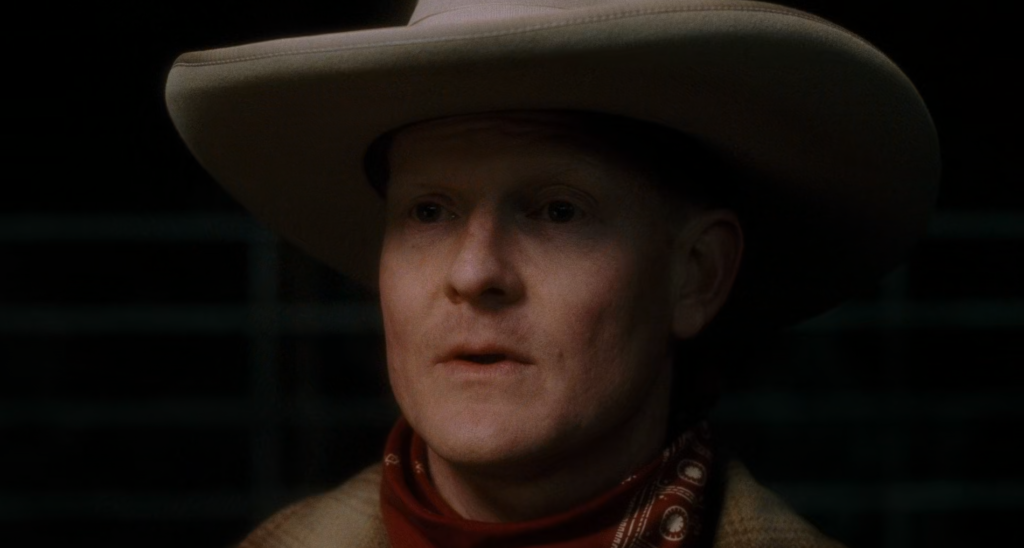
With the use of a reverse shot, this creates the effect of the confrontational conversation going on between the characters Adam and the cowboy. This editing Technique is used frequently between characters within the film, creating a locked off border into the expanses of some of the environments scenes are shot in. As a result, Lynch creates a nightmarish effect from this, using the idea of that their is fear in the unknown, in this case, the things that aren’t shown on camera.
Mulholland Drive task 4 Technical Elements
Cinematography
I believe that the cinematography of the film is best described as off-putting. I believe this is due to Lynch’s intense usage of wide shots and still camera shots. This makes the film seem unnatural and uncanny which is a subtle hint towards the films dreamlike atmosphere. An excellent scene that represents this is when director Adam Kesher was selecting candidates for his film and is observing a young actress. Their is a solid minute of her staring directly into the camera singing as if she is singing to the audience. This adds to the unease that the film presents.
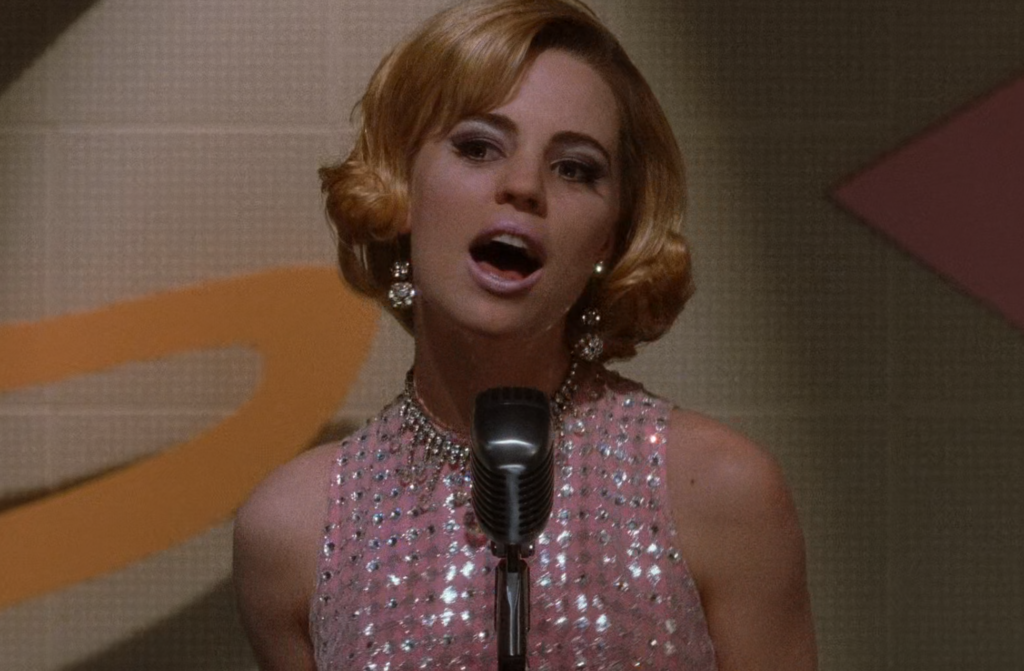
Mise en Scene
The characters outfits, car and buildings are all reflective of that of a 1950’s Hollywood era. I believe that this era was used due to the nostalgia element as well as it being useful to showcase the change of Diane’s character. We see how at first she has a very feminine look and appears to be attractive. This look shifts when she becomes jealous Camila and appears to be dirty and aggressive looking.
We see their outfits are expressive and vibrant which may be a hint towards the dream sequence idea the film is trying to present. There outfits seem almost unreal as if not many would wear them which could be a subtle hint to the dream world fabricated by Diane.

Sound
The sound of the film is very abstract and features a distortion of sounds in order to cause unsettlement within the audience. This is evidenced in the Scene where Diane is haunted by the old couple, the scene features a combination of sound including the knocking of a door, the laughter of a couple and Diane screaming. This makes Diane’s ruined mental state appear more vibrant to the audience.

Editing
A great way to describe the editing is the reflective of its characters mental states. A great way to showcase this is by showing the scene where Diane and the hitman’s conversation. This scene is co cut between the a scene with Diane at director Adam Kesler’s party. We see the cut start when a plate is smashed which could be used to represent Diane’s troubled mental state and how she is overthinking.

Lynch’s Auteur Trademarks
Mulholland Drive Task 4 – Technical Elements
Cinematography – The composition of shots in the film create intertextual references to the work of artist Edward Hopper, giving scenes set in the modern day a 1950s aesthetic. This perhaps suggests to the audience that the events are taking place in a ‘dream world’ or Diane’s mind as opposed to real life.


Mise en scene – The emptiness of shots in Mulholland Drive, especially in the scene depicting the Hollywood executives watching events unfold from a secret room, create a tense and confusing tone. The large amounts of space come across as unsettling and make the characters in frame look distant, reinforced by Lynch’s choice to give actor Michael J. Anderson, who is 3ft 7, fake legs to make him appear taller.

Sound – In the scene where Diane is haunted by the old couple, a combination of sounds including knocking at the door, the laughter of the couple, Diane’s screaming and a distorted instrumental track. This makes Diane’s deteriorating and guilt-ridden mental state clear to spectators and how tormented she is by her own actions.


Editing – The cut between Diane at Adam and Camilla’s party and Diane sat in the diner with the hitman, which is prompted by the sound of smashing plates, may be used in order to reinforce the idea of Diane’s troubled mental state and how her mind is constantly on other things.


Mulholland Drive – Lynch as an Auteur
How does Mulholland Drive exemplify Lynch’s Auteur approach to film making?
- In Mulholland Drive, Lynch creates a dreamlike atmosphere through sound design, surreal imagery, and experimental narrative. Since Eraserhead (1977), Lynch has made films with consistent aesthetic, narrative, and ideological approaches. Many explore a dark underbelly lurking beneath polite traditional US society; particularly in his TV series Twin Peaks 1990-2017).
- Lynch is noted for juxtaposing surreal or sinister elements with mundane, everyday environments, and for using compelling visual images to emphasise a dreamlike quality of mystery or menace.
- David Lynches ‘Lynchian’ cinematic style can be used to describe films with similar odd images and similar macabre themes. A tone, sense, atmosphere or experience that you fully understand but can’t quite describe.
